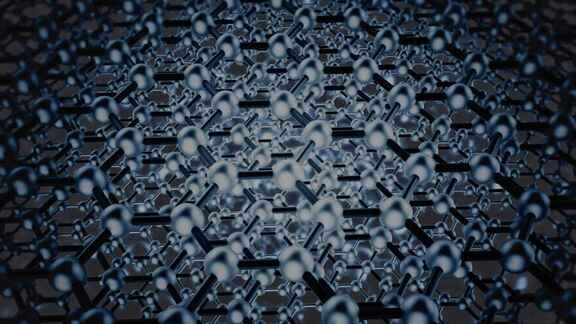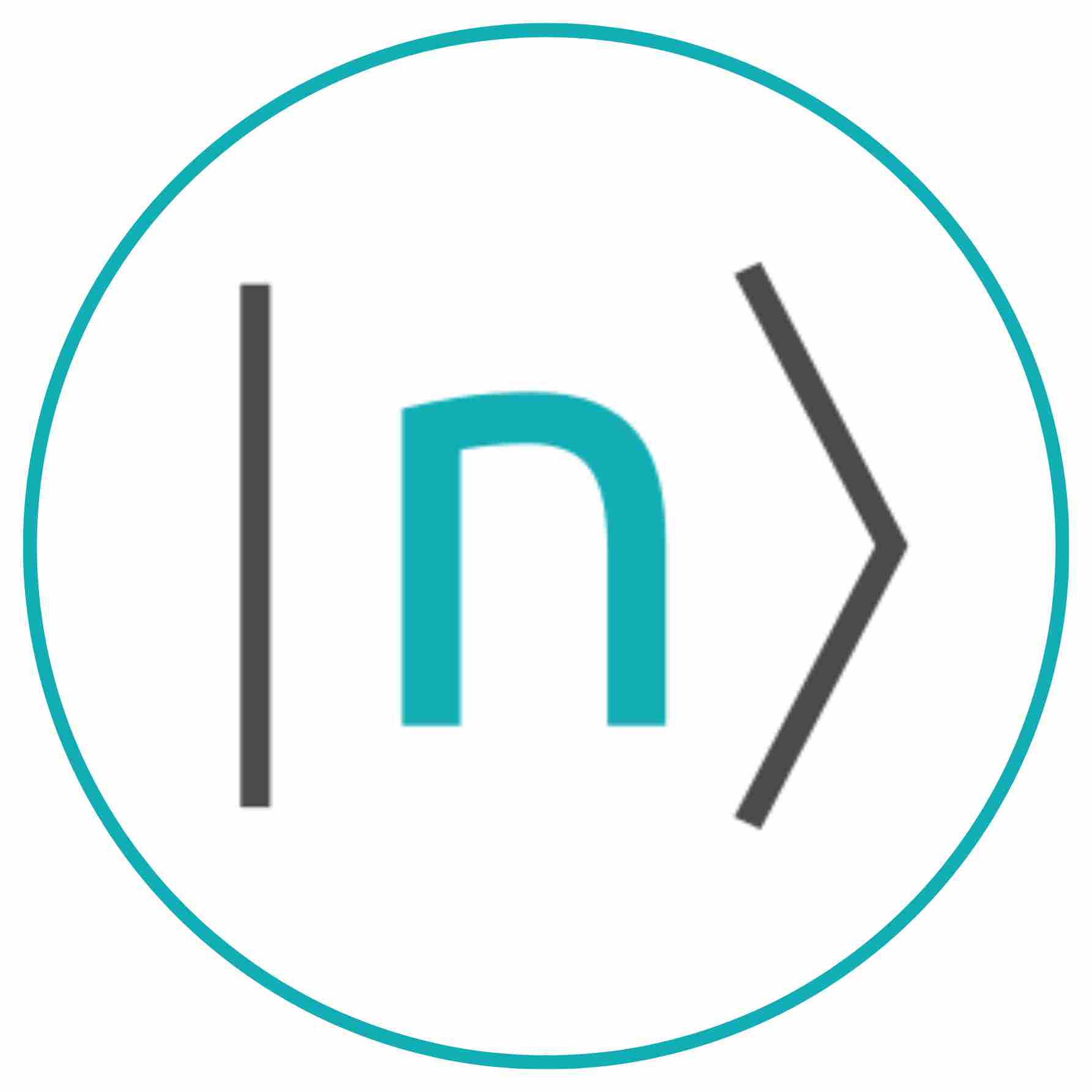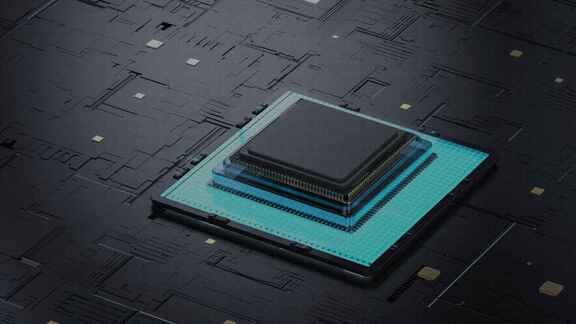We offer three packages:
- nextnano++ package
- nextnano.NEGF package
- Bundle package (contains both nextnano++ package and nextnano.NEGF package)
About this package
The nextnano++ package provides you with tools for designing, optimizing, and analyzing optoelectronic nanodevices of arbitrary geometries in 1D, 2D and 3D. This package is the best choice for modelling properties of a vast number of semiconductor structures. It allows you to design optoelectronic devices made of quantum wells, wires, and dots.
With the nextnano++ package, you gain access to advanced computational capabilities, which includes calculation of band structures, densities of states, charge distributions, wave functions, strain, piezo effects, optical spectra, quantized conductance, and much more.
This package includes:
- nextnano++
- nextnano3
- nextnano.MSB
- nextnanomat
- nextnanopy
Applications
nextnano++ offers advanced precision through a selfconsistent multi-band k.p Schrödinger-Poisson-Current solver for quantum mechanical 1D, 2D and 3D simulations, enabling advanced applications in the following domains:










Tools Included

nextnano++
nextnano++ forms the backbone of the nextnano++ package, a state-of-the-art program that enables solving the Schrödinger, Poisson, and Current equations self-consistently for arbitrary device designs. The algorithms incorporated in nextnano++ have been meticulously crafted to deliver dependable solutions, even for extreme designs under applied bias when used appropriately. As a result, nextnano++ facilitates modeling of systems in equilibrium and quasi-equilibrium states, providing accurate information on current densities, energy profiles, wavefunctions, and electronic band structures while considering the effects of strain, piezo- and pyroelectric charges, and magnetic fields. Additionally, nextnano++ can also compute various optical spectra or electron transport directly based on solutions obtained from the Schrödinger equation.
One of the key advantages of nextnano++ is its exceptional versatility, accommodating a wide range of materials, including group-IV semiconductors and all III-V and II-VI semiconductor binary compounds, as well as their ternaries, quaternaries, and quinternaries. The software supports both zincblende and wurtzite crystal symmetries and arbitrary structure geometries in 1D, 2D, and 3D, defined along any crystallographic direction. Moreover, the syntax of input files used by nextnano++ is continually evolving to keep pace with the increasingly complex demands of modern device design and analysis, while maintaining user-friendliness.
Learn More

nextnano³
nextnano³, the predecessor of nextnano++, shares many similarities with its successor. It offers the same core functionality and design versatility as nextnano++, with the addition of materials such as graphene and electrolytes.
While nextnano³ is not as actively developed as nextnano++, it still offers unique functionalities not available in nextnano++. In fact, it’s often the first platform where new implementations are tested before being carefully integrated into nextnano++. For example, nextnano³ features the 30-band model for bulk crystals, tight-binding model, k.p interface model, and classical avalanche effect.
We recognize that some of our customers may still prefer nextnano³ as it provides a range of tutorials that are not available yet in nextnano++. However, we recommend using nextnano++ wherever possible as it benefits from ongoing development and improvements, which enhances its convergence stability and speed. Our customer support and consulting services prioritize nextnano++ as the primary tool. Furthermore, nextnano++ features a more user-friendly input file syntax, enhancing usability.
Learn Morenextnano.MSB
Since 2021, nextnano.MSB has been integrated into nextnano++, enhancing user accessibility to its advanced capabilities.
This tool offers the Multi-Scattering Büttiker (MSB) probe model, a simplified version of the Non-Equilibrium Green’s Function (NEGF) method covering longitudinal polar-optical phonon scattering and acoustic phonon scattering.
Despite its simplified framework, the MSB model delivers realistic quantum transport calculation, as it contains the two most relevant scattering mechanisms. In comparison to the standard NEGF model, this tool is orders of magnitude more efficient while still accurately reproducing results obtained with the NEGF method. It is especially useful for modeling quantum transport in Resonant Tunneling Diodes (RTDs), where it produces current-voltage characteristics. Furthermore, for Quantum Cascade Lasers (QCLs), it computes optical gain spectra. However, our code has not undergone extensive testing for QCL simulations. Therefore, if you are interested in QCLs, we strongly recommend using the nextnano.NEGF software, where we have achieved excellent agreement between experimental data and theoretical predictions over many years of experience.
Learn More

nextnanomat
nextnanomat is a user-friendly graphical interface, designed to simplify the simulation process and streamline your experience with our suite of tools.
With nextnanomat, users can easily visualize computed 1D, 2D, and 3D results, and run any nextnano tools, while maintaining an overview of generated output files.
This feature-rich tool also provides a versatile workflow manager, enabling users to edit input files in ASCII or XML formats, organize simulations, and submit jobs directly or via a batch list.
nextnanomat also supports parallel job execution on multi-core CPUs and cloud computing through the free HTCondor software. This allows for the efficient and flexible simulation of complex quantum devices, making it an indispensable tool for researchers and developers alike.
Learn Morenextnanopy
nextnanopy is a Python package designed to automate and postprocess simulations withnextnano suite of software including nextnano++, nextnano³ and nextnano.NEGF.
With nextnanopy, users can easily run multiple simulations with varying parameters, plot publication-quality figures, calculate additional quantities using output data, and even define geometries in the input files based on importing GDSII files.
The nextnanopy package is maintained on Github as well as the Python Package Index (PyPI) repository, providing you with an accessible and comprehensive tool for automating and optimizing your nextnano simulations.
Learn More
Choose your nextnano++ package plan
FreePerfect for new users Try Now |
EvaluationIdeal for testing software's full capability Try Now |
StandardTailored for professional usage Price List |
Licensing |
|---|---|---|---|
| Price | Free | Free | Refer to Price List |
| License | None | Requires activation | Requires activation |
| Duration | - | 2 weeks | 1-3 years |
| Research Paper Publishing | ✗ | ✗ | ✓ |
| Commercial Use | ✗ | ✗ | ✓ |
| No. of Users | 1 | 2 | Up to 10 |
| Software Updates | ✓ | ✓ | ✓ | Support |
| Basic Support1 | ✓ | ✓ | ✓ |
| Standard Support2 | ✗ | ✓ | ✓ |
| Premium Support3 | ✗ | ✗ | Additional charge | System Compatibility |
| Operating System | Windows | All | All |
| Cloud Computing | ✗ | ✓ | ✓ |
| CPU Time Limitation | 1 min | Unlimited | Unlimited |
| Database | Restricted | Open | Open | Tutorials Included |
| Input files | Basics, pn junction, Double Quantum Well, AlGaAs/GaAs 2DEG |
More than 100 | More than 100 | Simulation Features |
| Simulation Dimensions | 1D | 1D, 2D, 3D | 1D, 2D, 3D |
| Temperature Dependencies | Limited to 300 K | ✓ | ✓ |
| Crystal Symmetries: Zinc Blende, Diamond, and Wurtzite | ✓ | ✓ | ✓ |
| Materials: III-V and II-VI binary compounds & group IV semiconductors | ✓ | ✓ | ✓ |
| Alloys: Binaries, Ternaries, Quaternaries, and Quinternaries | ✓ | ✓ | ✓ |
| Doping | ✓ | ✓ | ✓ |
| Magnetic Field | ✓ | ✓ | ✓ | Models Included |
| One-Band Model | ✓ | ✓ | ✓ |
| 6-Band and 8-Band k∙p Models | ✗ | ✓ | ✓ |
| Strain: Pseudomorphic & Minimization of Elastic Energy | ✗ | ✓ | ✓ |
| Piezo- and Pyroelectric Effects | ✗ | ✓ | ✓ |
| Drift-Diffusion Model for Currents | ✗ | ✓ | ✓ |
| Recombination Models: Radiative, Shockley-Read-Hall, and Auger | ✗ | ✓ | ✓ |
| Optical Spectra: Absorption, Emission, Optical Gain | ✗ | ✓ | ✓ |
| Self-Consistent Schrödinger-Poisson Solver | ✓ | ✓ | ✓ |
| Self-Consistent Schrödinger-Current-Poisson Solver | ✗ | ✓ | ✓ |
Need help choosing a plan or have a question? Email us at sales@nextnano.com.
Footnotes:
(1) Basic Support includes access to: online documentation, email support for technical issues, and bug fixes. Requests can be submitted from any domain, with institutional domains given higher priority.
(2) Standard Support includes assistance in: understanding syntax of input files, reproducing results of published tutorials, understanding basic functionality of the software. This support is exclusively for requests submitted from institutional domains.
(3) Premium Support is a set of personalized in-depth support services including, but not limited, to: explanation of physics and numerical methods involved in the models, active help with convergence issues, assistance with setting up input files, guidance for optimizing device performance, prioritized implementation of requested features, and video calls for direct communication.
About this package
The nextnano.NEGF package is a cutting-edge package specifically designed for modelling quantum transport in planar structures. This package is the best choice for precise simulations of Quantum Cascade Lasers (QCLs) and Quantum Cascade Detectors (QCDs), Superlattices, and Resonant Tunnelling Diodes (RTDs). With the nextnano.NEGF package, you gain access to advanced computational capabilities, which includes calculation of band structures, energy-resolved carrier densities and the density of states, optical gain, output power and L-I-V characteristics, wall-plug efficiency, and much more. We are proud to say that nextnano.NEGF is truly the best commercially available tool for modeling quantum transport in QCLs.
This package includes:
- nextnano.NEGF
- nextnanomat
- nextnanopy
Applications
nextnano.NEGF offers enhanced precision through Non-Equilibrium Green Function simulations, enabling advanced applications in the following domains:



Tools Included


nextnano.NEGF
nextnano.NEGF is an advanced computational tool and the core engine of the nextnano.NEGF package. It utilizes the cutting-edge Non-Equilibrium Green Functions (NEGF) formalism to accurately model quantum transport in planar structures, taking into account a range of scattering processes including longitudinal polar-optical phonon scattering, acoustic phonon scattering, charged impurity scattering, interface roughness scattering, alloy scattering, and electron-electron scattering.
Developed with the aim of providing highly accurate results within a finite computation time for 1D systems, nextnano.NEGF is also capable of computing optical spectra. The combination of these features, along with the coverage of various scattering processes, makes it an ideal tool for top-notch simulations of heterostructures such as quantum cascade lasers (QCLs) and resonant tunneling diodes (RTDs).
Learn Morenextnanomat
nextnanomat is a user-friendly graphical interface, designed to simplify the simulation process and streamline your experience with our suite of tools.
With nextnanomat, users can easily visualize computed 1D, 2D, and 3D results, and run any nextnano tools, while maintaining an overview of generated output files.
This feature-rich tool also provides a versatile workflow manager, enabling users to edit input files in ASCII or XML formats, organize simulations, and submit jobs directly or via a batch list.
nextnanomat also supports parallel job execution on multi-core CPUs and cloud computing through the free HTCondor software. This allows for the efficient and flexible simulation of complex quantum devices, making it an indispensable tool for researchers and developers alike.
Learn More

nextnanopy
nextnanopy is a Python package designed to automate and postprocess simulations withnextnano suite of software including nextnano++, nextnano³ and nextnano.NEGF.
With nextnanopy, users can easily run multiple simulations with varying parameters, plot publication-quality figures, calculate additional quantities using output data, and even define geometries in the input files based on importing GDSII files.
The nextnanopy package is maintained on Github as well as the Python Package Index (PyPI) repository, providing you with an accessible and comprehensive tool for automating and optimizing your nextnano simulations.
Learn MoreChoose your nextnano.NEGF package plan
EvaluationIdeal for testing software's full capability Try Now |
StandardTailored for professional usage Price List |
Licensing |
|---|---|---|
| Price | Free | Refer to Price List |
| License | Requires activation | Requires activation |
| Duration | 2 weeks | 1-3 years |
| Research Paper Publishing | ✗ | ✓ |
| Commercial Use | ✗ | ✓ |
| No. of Users | 2 | Up to 10 |
| Software Updates | ✓ | ✓ | Support |
| Basic Support1 | ✓ | ✓ |
| Standard Support2 | ✓ | ✓ |
| Premium Support3 | ✗ | Additional charge |
Need help choosing a plan or have a question? Email us at sales@nextnano.com.
Footnotes:
(1) Basic Support includes access to: online documentation, email support for technical issues, and bug fixes. Requests can be submitted from any domain, with institutional domains given higher priority.
(2) Standard Support includes assistance in: understanding syntax of input files, reproducing results of published tutorials, understanding basic functionality of the software. This support is exclusively for requests submitted from institutional domains.
(3) Premium Support is a set of personalized in-depth support services including, but not limited, to: explanation of physics and numerical methods involved in the models, active help with convergence issues, assistance with setting up input files, guidance for optimizing device performance, prioritized implementation of requested features, and video calls for direct communication.